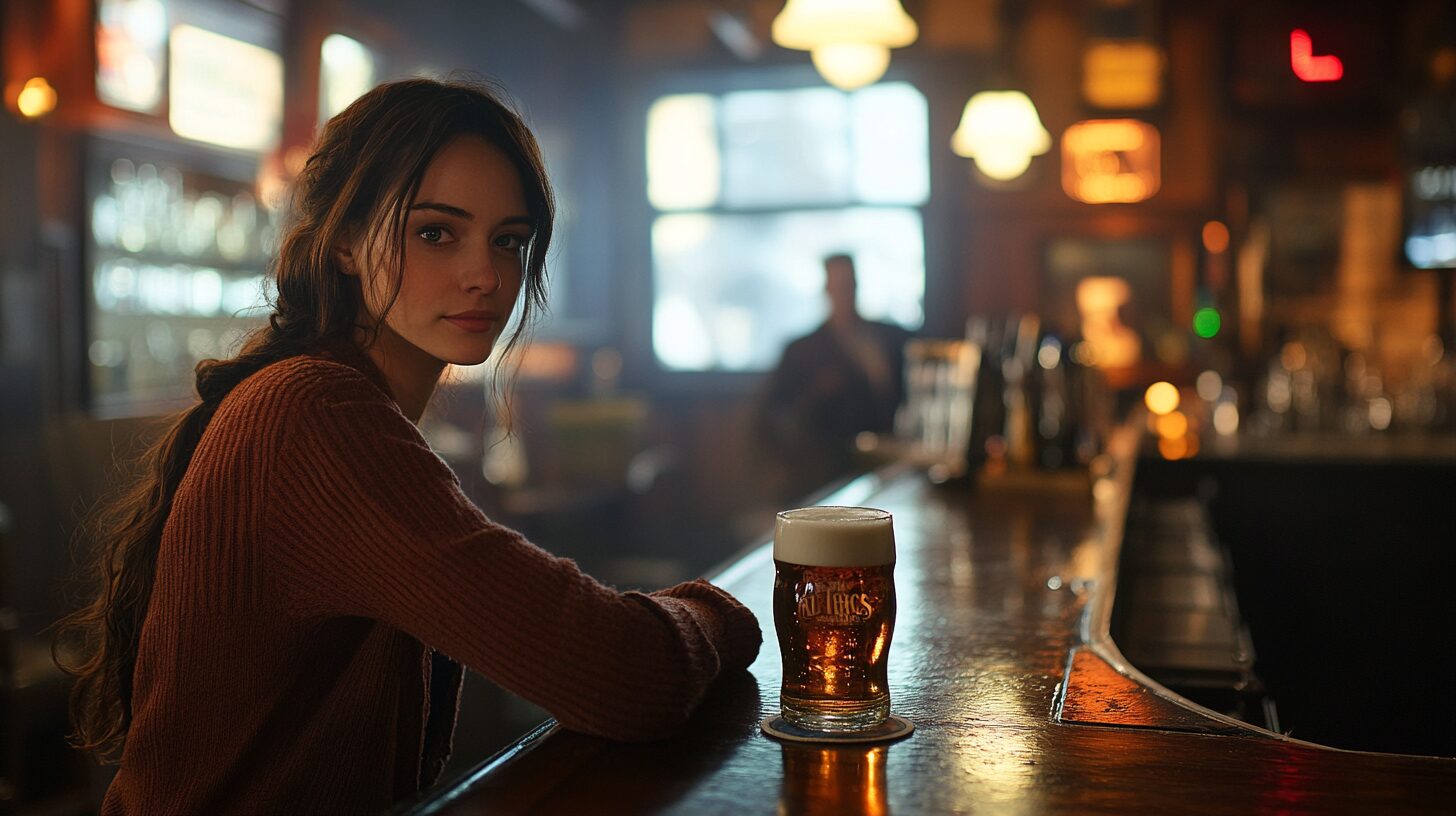Understanding Bourbon Whiskey
When I dip my toe into the bourbon universe, getting the lowdown on stuff like how long it’s gotta age and the rules of making it really helps me savor this old favorite.
Ageing Requirements
Bourbon whiskey needs some time—at least two years—hanging out in a barrel. If you pick one aged under four years, it’ll have an age note on its label. This gives the whiskey ample time to pick up some flavor mojo from its oak home (Distillery Trail). Here’s a quick rundown I keep in mind:
| Age Requirement | What It Means |
|---|---|
| Less than 2 years | Not bourbon |
| 2 years or more | It’s bourbon, baby! |
| Less than 4 years | Needs age note on the bottle |
Production Criteria
For any whiskey to strut about with a “bourbon” badge, it has to tick some boxes during creation. First off, at least 51% of that mash must be corn. Next, it’s gotta be boiled to no more than 160 proof and keep cozied up in a new charred oak barrel at less than 125 proof. Funny enough, the TTB (the folks who make rules for this stuff) says it’s cool to call it bourbon if it’s in that barrel for a minimum of five minutes. But if it’s aged less than four years, that pesky age note needs to be there (Distillery Trail).
| Production Box | What’s in it |
|---|---|
| Corn Content | Minimum 51% |
| Distillation Proof | Max 160 proof |
| Barrel Life | Fresh charred oak, less than 125 proof |
Knowing these tidbits helps me identify what makes bourbon such a cherished drink. If you’re pondering which bourbon’s good for sipping neat, swing by our guide on which whisky is best for drinking?.
Exploring Whiskey Varieties
So you wanna get to know your whiskey, huh? You’re in the right spot. Whiskey comes in loads of flavors and styles, all thanks to how it’s cooked up and aged. These details make a big difference in the taste of the whiskey I love.
Distillation Regulations
Every whiskey’s got some rules it has to follow if it wants to call itself a whiskey. According to Distillery Trail, whiskey can be made from pretty much any grain, but it’s gotta be distilled under 190° proof and aged in oak barrels. This is what sets whiskey apart from its smooth-talking buddy, vodka, making sure it’s got that rich taste and smell we all know.
Take bourbon whiskey for example—it’s got its own rulebook. Needs at least 51% corn, gets distilled under 160° proof, and is stored in new charred oak barrels at no more than 125° proof. Keeping to these rules is what gives bourbon its kick and charm, which is crucial when you’re aiming for that perfect sip.
| Whiskey Type | Grain Needed | Distillation Proof | Aging Needs |
|---|---|---|---|
| General Whiskey | Any grain | < 190° proof | Aged in oak barrels |
| Bourbon | Min. 51% corn | < 160° proof | New charred oak barrels < 125° proof |
Maturation Process
Now, here’s where whiskey makes its mark—the aging game. Letting whiskey chill in oak barrels is where it picks up its personality. These barrels give it color and flavor, making it stand out from the crowd. When I got into whiskey, I figured out why they don’t all taste the same, and it’s pretty wild.
This Blog’s NEAT talks about whiskey labels and the stories they tell about aging. Words like “Non-chill filtered” and “Cask strength” show off the unique ways each whiskey’s crafted, changing how it tastes and feels. And, those age statements? They tell you how long that whiskey sat tight in the barrel, which can make it silky or bold.
Whiskey needs to be stored right to keep its flavor game strong. No sunshine, and keep it cool as advised by Whisky Analysis, because good storage can make sure each glass is a mind-blower.
With my newfound whiskey wisdom, picking out the perfect bottle is so much easier now. Whether it’s behind the bar or on the liquor store shelf, I know what’ll go down smooth without the guesswork. If you’re hunting for recommendations, don’t miss out on articles like which whisky is best for drinking? and what is the smoothest easiest to drink whiskey?.
Cracking the Whiskey Code
Hey there, whiskey lover! You know, those labels on whiskey bottles aren’t just for decoration—they hold the key to understanding what you’re about to sip. And hey, as your whiskey wingperson, I’m here to help you unlock the secrets behind those labels. Let’s dive into bourbon first, and then we’ll delve into the exciting world of single malts.
Bourbon Label Basics
So, what makes a whiskey a bourbon? Well, buddy, it’s all about the rules laid down by the Alcohol and Tobacco Tax and Trade Bureau (TTB). Here’s the lowdown:
| What to Look For | What It Means |
|---|---|
| Grain Mix | Gotta have at least 51% corn—it’s the law! |
| Distillation Magic | Keep it under 160 proof (a modest 80% alcohol, no biggie) |
| Home Sweet Barrel | Aged in a brand new, charred oak barrel—yep, it’s fancy like that |
| Bottled Bravado | Must be a strong 80 proof or 40% alcohol to hit the shelves |
| Time’s on Its Side | Needs at least two years of aging; less than four and it’ll spill its age secrets |
Technically, you could throw your bourbon in a new charred oak barrel for, say, five minutes, and it could still roll with the bourbon label. But let’s be real—good bourbon has a thing for aging. It needs years to mature into a smooth, rich drink that warms your soul. Check out the full guide and fun facts from Distillery Trail.
Single Malt Savvy
Ah, single malts. They’re a whole different ball game and utterly captivating! Here’s how you crack their code:
| What It’s About | What It Means |
|---|---|
| It’s “Single” | Crafted all in one distillery’s cozy home |
| Pure “Malt” | Only 100% malted barley gets in the game—no imposters allowed |
| Age—As Honest as They Come | Shows the age of the youngest drop in that bottle |
When a bottle reads “12-Year-Old Single Malt,” the youngest whiskey in there is just hitting its teen years at 12. Fun fact: there might be some older, wiser droplets patching things up, adding depth (Whisky Analysis). But don’t let the age fool you entirely—it’s just about the youngest spirit in the mix, not the full rosy picture. Knowing this helps me appreciate what’s in my glass and pushes me to try flavors that rock my taste buds.
Want to dig deeper into picking the right whiskey? Check out our article on which whisky is best for drinking or learn why it’s good to drink whiskey. You’ll thank me later!
Whiskey Tasting Recommendations
When I’m on the lookout for that perfect whiskey to savor neat, I tend to wander through the realms of bourbons and Irish whiskies. They’ve got distinct vibes, which means there’s a sip for every mood and taste. Let me spill the beans on some of my personal picks.
Introductory Bourbon Selections
Bourbon usually steals the show when I’m craving boldness and complexity. To earn the bourbon badge, it’s gotta be made with at least 51% corn, distilled under 160° proof, and aged in brand new charred oak barrels. Fun fact: There’s no required minimum aging time, but if it’s less than four years, they’ve gotta slap an age on that label (Distillery Trail).
Check out these bourbons I think are perfect for dipping your toes in:
| Bourbon Name | Tasting Notes | Average Price |
|---|---|---|
| Buffalo Trace | A cozy blend of caramel, vanilla, and spice | $25 |
| Woodford Reserve | Bursting with rich fruit and oak | $35 |
| Bulleit Bourbon | Bold and spicy with a crisp finish | $30 |
These picks pack just enough punch without being too much, perfect for sipping solo. Curious about top bourbons? Swing by which whisky is best for drinking?.
Distinctive Irish Whiskey Picks
Sometimes, I just want something with a different groove, and that’s where Irish whiskey comes in. With its smooth blend of flavors and a hint of sweetness, it’s a winner for neat whiskey loves. Take Jameson Caskmates for example; it gets its unique touch from aging in ex-stout barrels, giving it a fruity twist on the classic Jameson vibe. Then there’s Teeling, a darling for its quality and craftmanship.
Here’s a sneak peek at some of my Irish whiskey go-tos:
| Irish Whiskey Name | Tasting Notes | Average Price |
|---|---|---|
| Jameson Caskmates | Notes of honey, vanilla, and a strong stout presence | $30 |
| Teeling | A spicy, floral affair with a fruity hint | $35 |
| Redbreast 12 | Luxuriously full-bodied with dried fruit whispers | $60 |
These Irish choices keep it smooth and delightful, ideal for anyone who loves to take their whiskey neat. If you’re diving into whiskey, learn more at is whiskey meant to drink straight?.
And as you mosey through these bourbons and Irish whiskeys, remember that your taste is king in discovering your ultimate go-to. Happy sipping!
Global Whiskey Regions
Alright folks, if you want to truly savor a good whiskey, ya gotta know where it comes from. Let’s take a stroll through some of the world’s prime whiskey spots: Scotland and Canada.
Whiskey Production in Scotland
Now talkin’ about Scotch whisky is like talking about rock stars, it holds a place on the global stage. It’s all about that signature smoky flavor, which comes from drying malt with peat smoke and distilling twice in those shiny copper pot stills. Scotland’s got more than a few spots on the whisky map, each churning out their own unique tastes:
| Region | Characteristics |
|---|---|
| Highlands | Bold and brawny whiskies, with a rich and kinda sweet vibe. |
| Speyside | Bursting with fruitiness and a touch of luxury, even a dude next door can sip it. |
| Lowlands | Easy-going whiskies with a flowery and grassy charm. |
| Islay | The rock ‘n’ roll of Scottish whiskies, famous for smokiness, but they also come un-smoked. |
| Campbeltown | Brings a mix of flavors, often touched by the sea breeze. |
If you’re hangin’ around Islay, for example, the Laphroaig 10 is like a rock concert in your mouth, with its medicinal, malty tang, a whisper of sweetness, and a peaty punch. Over in Speyside, the Craigellachie 13 is suggestive with rich, thunderous notes that play nice with sherry whispers—perfect for those just beginning their whiskey journey. Curious about more whisky wonders? Dive into which whisky is best for drinking?.
Whiskey Diversity in Canada
Headin’ over to the Great White North, Canadian whisky is like a charm bracelet; you’ve got all kinds of styles and flavors, generally leaning toward the light and smooth side. Canadian whisky magicians love to blend different grains, cookin’ up a variety of flavor combos that give this whiskey its special character.
Canadian brands wear their heritage and craftsmanship like a badge of honor. Known for its smoothness, it’s an easy choice for whiskey beginners and buffs. Names like Crown Royal and Canadian Club are big players, offering everything from blended whiskies to single malts.
No matter the style, Canadian whiskies are a solid choice for sippin’ neat, and they mix well with pretty much anything if you’re feelin’ like a cocktail. If you’d like to see what’s hot in the whiskey world, pop over to which is the most popular whiskey?.
Affiliate Disclosure: This post may contain affiliate links. If you click and purchase through one of these links, we may receive a small commission at no extra cost to you. Thank you for your support!




